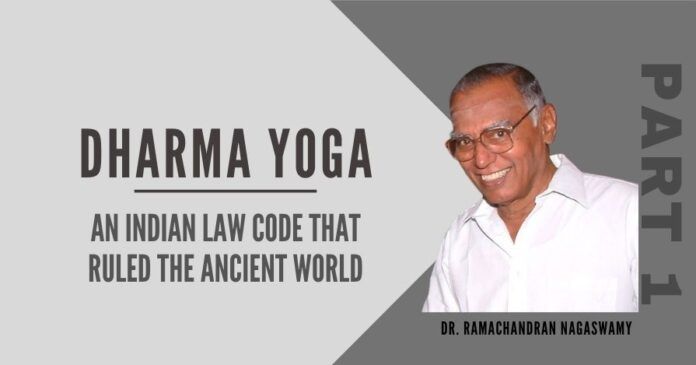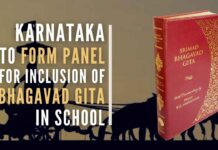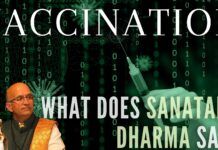
Dharma stands for a worldly code of action
This is the latest book by Dr. Ramachandran Nagaswamy which opens up a new field of study of ancient civilization, particularly comparative study of Ancient Indian Law code with the administration of law in other parts of Asian countries like South East Asia, China, Japan, Central Asia, and West Asia. mainly relying on inscriptions, coins, foreign notices, and literature.
The roots of ancient Indian civilization found in Vedic tradition were divided into worldly action called Pravritti Dharma and religious action called Samaya Dharma. According to the Indian definition, Dharma stands for a worldly code of action. This is prescribed in the Vedas as teaching in Taittiriya Upanishad when a student takes leave of his teacher on completion of studies. These teachings and other advices have been compiled into a code of law by Manu, under the title “Manu Dharma Śāstra”. This is the most ancient constitution of the law of India which was followed by all the Kings in administration. The exact date of Manu is not known but surely his work is earlier than 8th Century BCE based on an inscription on Buddhist stupa of Sanchi. This study shows that the Indian code of conduct called “Dharma Dasakam” spread throughout Asia, from almost 13th Century BCE to 5th Century CE. Thus it is a history of Indian law that ruled the whole of the ancient world from Great Britain, through Europe, India, Central Asia, and South East Asia that is consisting of Thailand, Cambodia, Vietnam, and other countries, East Asia consisting of China, Japan, Korea, etc; and Central Asia including Uzbekistan and Tashkent in the great silk route and the whole of West Asia.
The title “Dharma yoga” consists of two words, Dharma and Yoga. Dharma, according to an ancient definition is that which sustains civilization, dhāranāt dharmam ityuktam dharmam.
Ancient India has an extraordinary collection of poems known as the Vedas. The date of the Vedas is debated beginning from 3500 BCE to 1500 BCE. These have been preserved by an exemplary system of preservation. The learned among the scholars assign the terminal date to be 1500 BCE. So the knowledge system and the philosophy of concepts that India developed for civilized life were called the Upanishads. The second part dealing with the worldly life in the Upanishads of Yajurveda is in the section on teaching the Sīkshavalli, a code of life. These were compiled by Manu who was not a Brāhhmana but a Kṣahtriya – warrior class, who was the first to give the code of law. This law code was not later than the 8th Century BCE. There were other lawgivers who came later, who added minor regional variations and conventions.
A few facts about Manu’s Dharma Śāstra, which are quoted out of context by colonial historians and writers, are for example the text of Manu was oriented towards Brāhmanās. But at the very beginning of this work, he has said that he created the varnas, which was not applicable only to Brāhmanās but to all the four castes. He says that he created the fourfold classification in a society based on the qualities and profession of the Individual. Second these codes of conduct are applicable to all castes – Brāhmanās, Khsatriyās, Vaisyas and Sūdras and also people of mixed castes. The Vedas have accepted inter-caste marriages and appropriate profession for all people. The next point of importance is the mobility of caste from lower to higher was accepted from the beginning. Manu emphasized the equality of soul and his main aim was to usher in Samatva and Samadarṣana and impartiality.
The title “Dharma yoga” consists of two words, Dharma and Yoga. Dharma, according to an ancient definition is that which sustains civilization, dhāranāt dharmam ityuktam dharmam. The word Dharma is used in several other meanings as well in different contexts. Dharmam means law, righteous conduct, gift, etc. But Manu gives an important definition. Dasśakam Dharma Lakshanam says Manu the most ancient Indian lawgiver. They are called Dhriti, kshamā, sama, asteya, dama, sauca, indriya nigraha, Dhi, vidya, and akrodha (steadfastness, forbearance, impartiality, non-self-control, control of senses. Knowledge, purity, learning and good demeanor). All later lawgivers of India have emphasized these principles. One late lawgiver calls the qualities of individuals as ātma gunās. “Yoga” is not twisting various limbs of the body that would give miraculous powers. It is pure and simple purification of the body and the blood through simple breathing exercises and mind and thinking process in a relaxed manner. An extraordinarily formulated scientific text is “Ashtānga yoga” of Patanjali consisting of yama, niyama, Āsana, prānāyāma, pratyāhāra, dhāranā dhyāna, and samādhi. The first two, yama and niyama, include the major part of the ten qualities mentioned above. There is no culmination of yoga without Dharma. These two are not restricted to any individual, sect, God, religion, language but are universal and are for all people of the world.
Beginning the study with sources from Tamil literature, especially the well known and beautiful Thirruk-kural by Thiruvalluvar which is considered, virtually the lawbook of the Tamils but it is fully based on Manu Dharma and the life of the Tamil people was based on Sanskrit sources. Many standard Tamil texts like Tolkāppiyam, Sangam Literature, Inscriptions, and Devotional Literature. A Buddhist text – Manimekalai in Tamil in is also cited to show the Śastric impact on Tamil literature in which Lord Buddha is said to have taught Dasa Pāramita – the ten noble paths. Following this position of Manu’s Dharma as prescribed in Sanskrit sources, especially Bhagavad Gita, Svetasvatara Upanishad and the commentaries of the great Advaita exponent Śankara on Bramha Sūtra Bāāhya, Gita Bāshya and also commentaries on Upanishads and Āpastamba’s law code. Śankara establishes the Advaita Vedanta is only the extension of Manu Dharma which holds all souls are equal and all the studies and lifestyle should be oriented towards the realization of ones own self – Ātma jñāna. He was the first to declare that every human being has got intelligence and capabilities to achieve ultimate knowledge which is called liberation. Śankara also says no one can prevent anybody from achieving redemption. Also a brief summary of later Dharma Śāstras like that of Gautama, Āpastamba, Bodhāyana, and Yājñavalkya. At the initial stage, the emphasis was on conventional adoption of law as Indians perfected oral tradition through which they were able to preserve the whole body of Vedas and Vendangas. An interesting inscription found on a pillar of Buddhist stupa at Sanchi, Bhopal helps in dating Āpastamba Sūtra to the 5th Century. BCE. The Manu Śastra an administration of the state all over India throughout the century from Assam to Punjab – Kashmir to Kanyakumari. Various dynasties both in the North as well as in the South mention in their own lithic records that they administered their country with Manu Dharma from the 4th – 5th Century to the time of the Islamic takeover of the country. After the introduction of writing in the 3rd Century BCE by Aśoka, Yajñavalkya introduced the system of written documents for Royal and Judicial administration.
To be continued…
Note:
1. The views expressed here are those of the author and do not necessarily represent or reflect the views of PGurus.











Want to read it.
Preface to the Book: Dharma Yoga – An Indian Law Code that ruled the Ancient World – Part 1
Very good initiative indeed. I learnt that 5000 plus years ago, Vikramaaditya ruled samastha bhoomandala. Thus Sanatana Dharma pervaded whole world.
Good that PGURUS is bring all the intellects available in the country on one platform before the Western countries/plagiarists around the world claim all the ancient Indian knowledge as their own!!
HRD ministry and the PMO must wake up now and try to fund projects extolling ancient Indian Wisdom.
[…] previous part 1 of the article can be accessed here. This is part […]
Please post a link to purchase this book online.
There will be much more than that! Stay tuned. The 90-years young Sanatana Dharma warrior will be on PGurus to talk about this book.